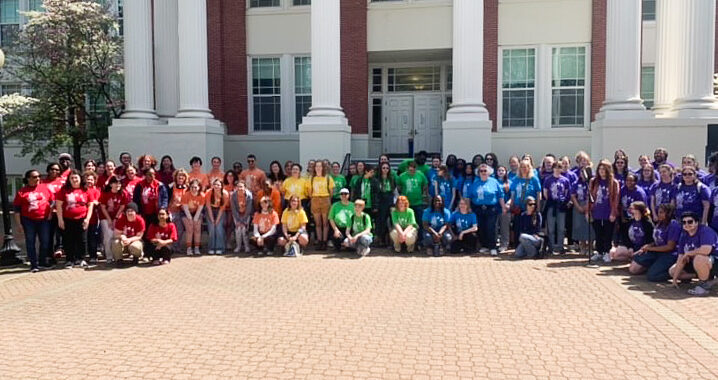Students feel the love with therapy dogs’ visit to the UMW campus
3 min read
UMW Eagle Eye
By PAIGE WALTON
A six-page paper due next week, one take-home quiz to be completed tonight, and 30 pages of reading to get through before tomorrow. Every day of the week students have a lot on their plate. Finding ways to cope and manage the stress that comes with school can be difficult and time consuming. One proven way to alleviate stress and brighten people’s moods could come in the form of frequent therapy dog visits to campus, according to Dr. Tevya Zukor, director of the Talley Center.
An animal’s presence can be both calming and exciting, the perfect mix for encouraging a tired student to keep going. For the downtrodden student, walking along Campus Walk and running into a dog can be just what they need to turn their day around. The worries of the classroom become a distant memory as the student crouches down to pet the dog, smiling and laughing as the dog rolls over for a belly rub. In that instant, it is just the student and dog and suddenly their to-do list does not seem so impossible.
According to Zukor, the incorporation of therapy dogs into the college campus atmosphere has risen sharply in the past seven to eight years. “One of the primary reasons for this increase is that the use of therapy dogs has been shown to be clinically effective in reducing anxiety, which is now the most common mental illness for college students,” Zukor said.
“Data collected at the Talley Center has also shown that for UMW students, anxiety has (slightly) overtaken depression as the most common reason for students to seek TCCS services.”
In a previous edition of The Blue & Gray Press, staff writer Colleen Cosgriff polled 100 students and found that 80 percent of them have experienced or are currently experiencing anxiety. With such high numbers, anything the university can do to combat anxiety and work with students to feel better is worth exploring.
“Finals week was so stressful and I’m really happy that SAE brought in therapy dogs during that time because it made studying for my finals more manageable,” said sophomore Sloane Smith. Graduate Assistant for SAE Kevin Duong has experience in coordinating with the Blue & Gray therapy dogs, a non-profit volunteer based organization that services the Fredericksburg area. Duong sheds some light on the process of obtaining the dogs.
“The process is quite simple really and the nice part about Blue & Gray is that they are a non- profit and come here for free and as a resource to our students,” Duong says. “The only difficult part is coordinating whether they have an availability for the days we ask for because they are quite popular.”
The demand and desire for therapy dogs is high, according to sophomore sociology major Corinne Kuge.
“If there were more dogs on campus, I think I would feel less stressed because being around them is just so enjoyable and it really makes my day to see a dog,” Kuge said.
The presence of a dog on campus often draws a crowd as students vie for the chance to pet the pup. It is not uncommon for social media to alert others of the location of a particularly cute puppy on campus, as students take to YikYak, Facebook, Snapchat or Twitter to let their friends know. Many people will go out of their way for the chance to interact with a dog and it can be a welcome break from the stress of daily life.
The university allows students with documented need through the Office of Disability Resources to bring animals, primarily dogs but also cats or small rodents, to live with them in campus housing, recognizing the therapeutic benefits of an animal’s presence. The student must have doctor documentation of disability-related needs, physical or mental, to apply for an emotional support or service animal.
“There’s something about an animal that connects with your soul; they don’t ask questions; they don’t judge you and they give you the closest thing to Christ-like love from anybody,” said junior communications major Caty-Scarlett Coleman. “There are no strings-attached, no give and take, just free love.”











